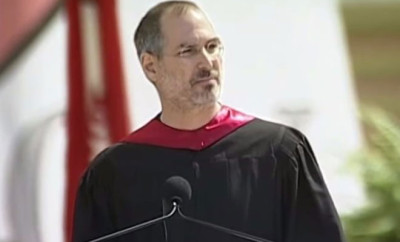
The Theoretical Roots of NLP-Based Coaching
NLP (Neuro-Linguisitic Programming) is a communication model; it is about the internal representation of experience and how people communicate with themselves as well as others.
It focuses on peoples’ subjective experience and constructed reality (Tosey, Mathison & Michelli, 2005). The ‘neuro’ refers to the way humans experience the world through their senses and translate sensory experiences into thought processes (both conscious and unconscious) which in turn activate the neurological system; ‘linguistic’ refers to the way we use language to make sense of the world, capture and conceptualise experience and then communicate that experience to others; and ‘programming’ addresses the way people code (mentally represent) their experience and adopt regular and systematic patterns of response. (Hall & Belnap, 1999; Corsetty & Pearson, 2000).
In the field of general semantics, Korzybski (1933/94) articulated an explanatory model of the human mind-body system, comprising many interactive parts: mind (meaning, semantics), body (neurology), emotions, and beliefs. That was the beginning of the NLP model.
Korzybski also explained how humans create their unique cognitive ‘maps’ of the external world they encounter. His map/territory distinction explains ‘emotion’ as the registering somatically of the difference between our maps of the world and our experience of it. People construct meanings in their mind and package them in symbols (words), share them and embody them. Words work in their neurology to create emotional states and induce them into various mind-body-emotion experiences (O’Connor & Seymour, 1990; Bolstad, 2004).
An even more substantial source of NLP was the Human Potential Movement of which Abraham Maslow and Carl Rogers were the leading pioneers. The connection for this goes back to the key figures in NLP and in the Human Potential Movement (Anderson, 1983; Bolstad, 2005). At Esalen in southern California, Fritz Perls was the first ‘scholar in residence’ and Gregory Bateson was the last. The first person in charge of Research and Development at Esalen was Virginia Satir. These key leaders of the Human Potential Movement were also the key people modelled by Bandler and Grinder in 1972–1975 (Bandler & Grinder, 1975, 1976).
The Human Potential Movement was launched from Maslow’s modelling study of psychologically healthy people, or ‘self-actualisers’ (Maslow, 1968, 1970). His work created a paradigm-shift, away from building a model of human nature based on sick or neurotic people, towards one that explained healthy or self-actualising people. From this came the premises of NLP (the ‘NLP presuppositions’) such as ‘people have all the resources for their full development’, ‘resistance indicates the lack of rapport’ and ‘there is a structure to all experiences’. The NLP Presuppositions (Bandler & Grinder, 1975, 1976) were derived almost entirely from the work of Virginia Satir and Fritz Perls, which in turn was based on the premises of the Human Potential movement of Maslow and Rogers (Hall, 2006).
Based on his scientific and psychometric research, Rogers (1955, 1961) concluded that people have a basically positive direction, are self-directing and autonomous; he talked of self-regulatory activities. Change was about ‘loosening cognitive maps’. He also linked thoughts, feelings, experiences and physiology to the change process. Rogers’ idea that helpful therapeutic relationships required reflective listening, empathy and separateness of self, underlie NLP practitioner skills (such as state management and rapport-building through calibration of representational systems, matching and mirroring language predicates, pacing and leading) as well as traditional approaches to helping skills that emphasise qualities such as congruence, empathy and positive regard (Egan, 1975).
Glasser’s Reality Therapy (1965) talks of the therapist not accepting excuses or blaming, of the need for client to take responsibility and of emphasising behaviour change rather than search for roots of problematic behaviour. These too, are principles underlying the NLP approach to coaching.
So NLP is partly based on the same cognitive behavioural approaches that have informed the solution-focused approach over the past 20 years (de Shazar, 1988, 1994). Both approaches emphasise the clarification of goals; harnessing strengths and resources; focusing on meanings, possibilities and solutions (not ‘problems’); talking about feedback not ‘failure’; amplifying what works; suggesting that if something doesn’t work it is useful to try something different. NLP, in addition, focuses on assisting clients to change and manage their physiological, neurological and emotional states directly; it utilises all sensory representation systems, thereby reducing the bias towards verbal processing, inherent in the solution-focused approach.
Cognitive theory – first as RET (Ellis, 1962) focused on ‘thoughts’ as primary in driving human experience. Later, REBT (Ellis & Harper, 1975) suggested that ‘thoughts’ are revealed primarily as words, self-talk statement, and beliefs. How we think affects how we feel, which in turn affects how we behave (Ellis & Harper, 1975; Beck, Rush, Shaw & Emery, 1979). Cognitive reframing and challenging self-talk are used in RET and REBT. NLP also draws from reality theory and learning theory the need for positive and negative reinforcement, setting goals, contract negotiation and not ‘failing’ people.
NLP and cognitive behaviour counselling, both draw on self-efficacy theory (Bandura, 1986) and his cognitive learning theory regarding the quadratic reciprocity of four domains of human experience: thoughts, feelings, behaviour and situation (Bandura, 1977). The motivational power of goal-setting (Latham & Locke, 1991; Locke, 1996; Hesketh, 1997) is a central assumption in NLP, as in other cognitive behaviour approaches (Grant, 2001; Grant & Greene, 2001).
Like narrative therapy and solution-focused brief therapy, NLP belongs philosophically to the discipline of constructivism (Korzybski, 1933/1994; Miller, 1956; Bateson, 1972; Walsh, Craik & Price, 1992; Watlzawick, 1974; Weakland, Fisch, Jackson & Watlzawick, 1974). A key NLP pre-supposition is that people invent or construct their maps and models of the world because we do not deal with ‘reality’ or ‘the territory’ directly (Bandler & Grinder, 1975).
Tosey, Mathison and Michelli (2005) suggest that although NLP has been influenced by many fields and disciplines, perhaps the most important the cybernetic epistemology of Gregory Bateson … The cybernetic aspect is reflected, for example, in NLP’s adoption of the TOTE (test-operate-test-exit) mode of functioning (Miller, Galanter & Pribram, 1960), which depends on the dynamics of calibration and feedback (Bateson, 1973; Wiener, 1965).
The TOTE (test-operate-test-exit) model of self-regulation (Miller, Gallanter & Pribam, 1960) informed the work of Bandler and Grinder that lead to the Strategy Model in NLP (Dilts, 1980; Hall & Bodenhamer, 1999), just as it informed the work of others studying the regulation of learning and behaviour (Carver & Scheier, 1998).
Like the solution-focused approach, NLP was informed by cognitive therapy (Beck, 1976) and by Erickson’s Strategic Therapy (Zeig, 1994; Battino & South, 1999). Erickson worked with clients on the problems to be solved, rather than on the causes of the problem. He showed how rapidly perceptions, behaviours and states can be changed when the conscious mind is bypassed, especially with the highly skilled use of language.
To some observers, Erickson and Bateson are originators of NLP, just as they are of other brief, solution focused approaches (Norman, McKergow & Clarke, date unknown). Both NLP and solution-focused approaches are constructivist and humanistic, sharing a focus collaboration, feedback, finding out what works and what doesn’t, focus on solutions and resources, precision questioning, visualising a preferred future, step back and notice the problem is the problem.
To these shared assumptions, philosophy and techniques, NLP added the focus on internal representation systems and the language processes that help clients change those internal representations, and physiology, in order to change emotional states and behaviours. By the 1990’s neuroscientists were providing detailed evidence of the complex neural and biochemical feedback and feed-forward loops that explain the interactions among perception, neural/mental patterns, sensory representations, emotion, feeling, changes in body state, thought, language, consciousness, sense of self, decision- making and other behaviours. (Pert, 1997; Damasio, 1994/2006; Damasio, 2000). They attest, for example, to ‘the partnership between so-called cognitive processes and processes usually called ‘emotional’’ (Damasio, 2006, p.175). Their findings support the mind-body-emotion system that was described by Korzybski (1933/1994) and the many ways NLP practitioners assist clients’ communication with and through their nervous system (Bolstad, 2004).
During its first years, NLP focused on the level of primary states and responses. In 1994, Hall developed the Meta-States model supported by evidence obtained by modelling neuro-linguistically the way in which people think and feel about primary states and thus experience ‘states about states’ (Hall, 1994)/2002). The Meta-States model integrated more of Korzybski’s seminal work, Science and Sanity (Korzybski, 1933/1994) with NLP. Whereas NLP was launched with Korzybski’s cognitive-behavioural distinction (‘the map is not the territory’), the Meta-States model brought in Korzybski’s ‘structural differential’ (or level-of-abstraction) model relating to the effect of one state upon another (‘first order effects’ vs. ‘second order effects’ such as, pitying pity). The Meta-States model also incorporated the insights of Bateson and his associates, especially Paul Watzlawick, in describing the paradoxes that arise in communication and thought (Bateson, 1972; Watzlawick, Beavin & Jackson, 1967; Watzlawick, 1976; Watzlawick, 1978; Watzlawick, 1984). It also brought in more of Bateson’s work on logical levels and types (Bateson, 1972), as well as current work in meta-cognition (Metacalfe & Shimamura, 1995).
By modelling self-reflexive consciousness and the way it creates layers of thoughts-and feelings and embeds unconscious belief frames which, in turn, affect our actions, reactions, and behaviours, the Meta-States model has brought a much more systemic approach to NLP. It has more fully introduced neurolinguistic feedback and feed-forward loops of information and communication. The primary states and meta-states distinction in NLP parallels the distinction in neuroscience between primary and secondary emotions (Damasio, 1994/2006).
Tosey, Mathison and Michelli (2005) have demonstrated how NLP is a structured and systematic means of mapping the subjective experience and constructed reality of people experiencing transformative learning or coaching. In other words, NLP enables coaches to codify and respond to their own and their clients’ experience. As NLP is useful for describing the intrapersonal and interpersonal processes, as well as outcomes, of transformative learning/change, we believe it is worthwhile for coaches to understand it and learn to use it skilfully. As the founders of NLP 25 years ago (Dilts, Grinder, Bandler et al., 1980) said: ‘Your ultimate success at helping people achieve their desired outcomes – including managing change – will depend on your ability to observe, identify and utilise the multitude of patterns that will constantly be offered to you in your sensory experience by clients.’
Conclusion
John Martin (2005) notes that ‘NLP originally developed as a form of psychotherapy in the 1970’s. NLP authors tend to quote one another rather than linking with the wider worlds of psychotherapy, communication training etc and their methods have often been experience-based rather than research based, so it can be difficult to evaluate them in an independent and broadly informed way.’
This paper has taken a step towards evaluating NLP in an informed way. It also offers a response to the challenge articulated by Stober, Wildflower and Drake (2006) who called for coaches to ‘begin integrating evidence from both coaching-specific research and related disciplines, their own expertise, and an understanding of the uniqueness of each client … roots in a number of fields. Therefore, one of the significant tasks before us is the integration and application of this disparate knowledge base into a coherent body of knowledge that applies to and guides coaching.’
NLP-based coaching is an example of such an approach, integrating as it does a disparate but significant body of established knowledge and theory. We have argued that the NLP model of communication integrates evidence from various disciplines and is a useful model for coaches because it allows them to codify and respond appropriately to their own and their clients’ experience (Tosey, Mathison & Michelli, 2005).
www.gooddecisions.com.au
Accessing Your Personal Genius
To learn more about Accessing Your Personal Genius click here
www.neurosemantics.com
www.neuro-semantics-trainings.com
www.self-actualizing.org
www.meta-coaching.org
First published at The Coaching Psychologist 3(1). Leicester: The British Psychological Society.“







